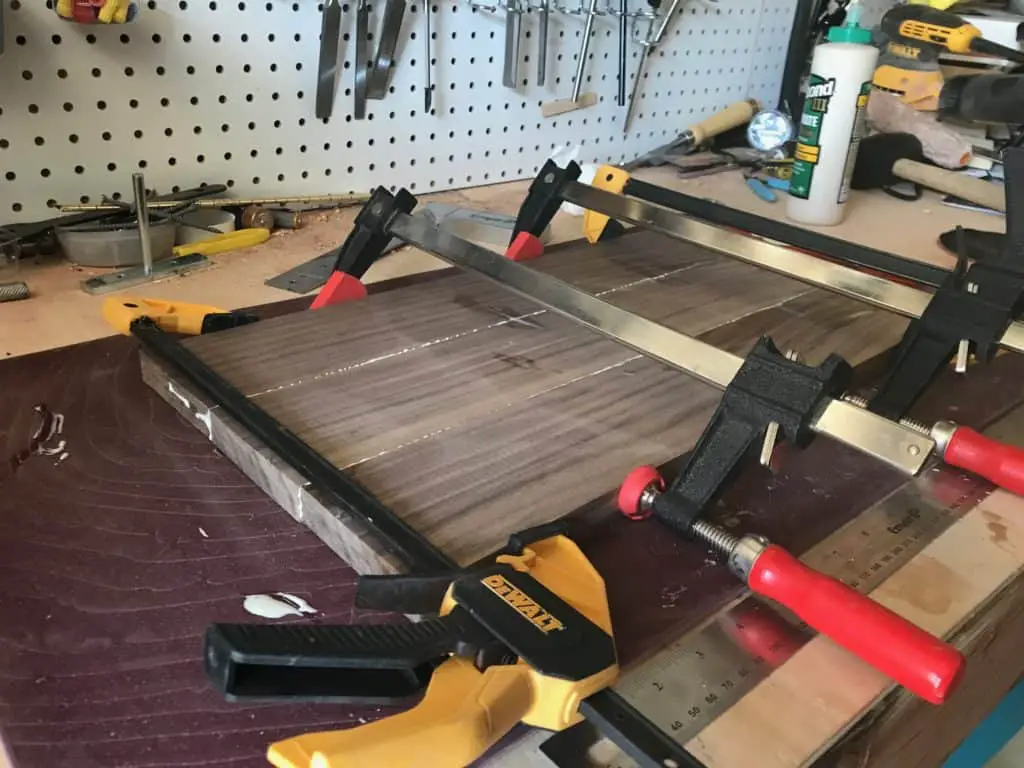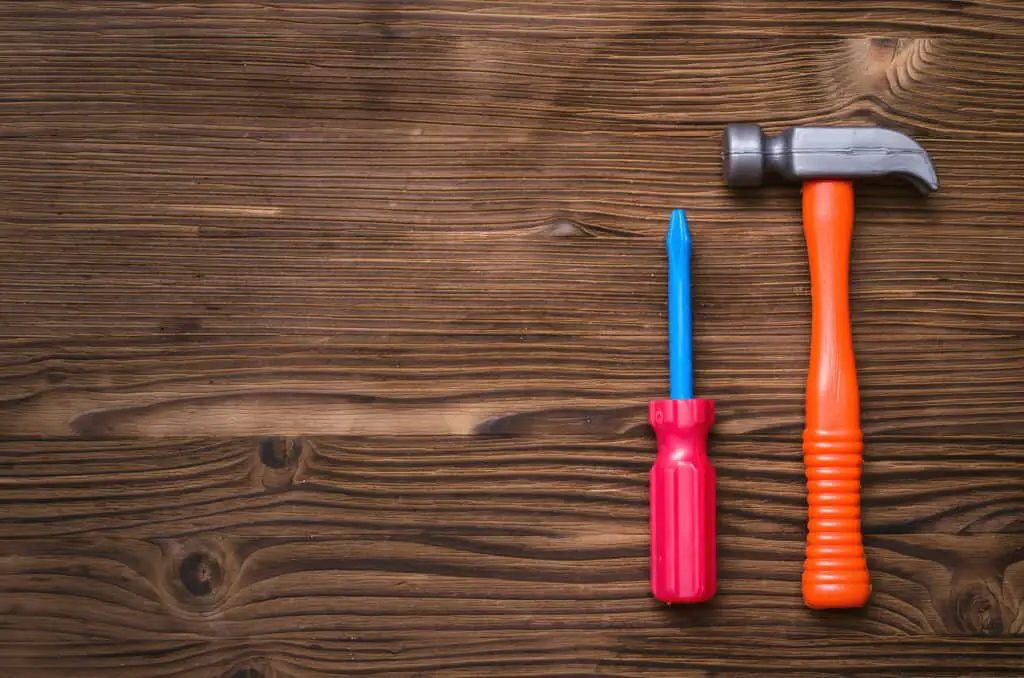So you’ve started work on your first workbench. You know generally what you want out of it, you just aren’t quite sure how to get there yet. The kind of wood you use might be critical in determining whether this workbench can serve the purpose you need it to.
The best wood for a vanity workbench that will be used for many different purposes is hickory. Hickory is a hard wood and is fairly heavy, which makes it ideal for all kinds of purposes. However, any wood that is heavy enough to hold itself down can be successfully used in a workbench.
The answer to this question is really more complicated though. Depending on the type of work you intend to do at your bench, hickory might not actually be the best choice. What wood will be the best for you really depends on what you’re looking for. Let’s take a closer look at which different types of wood can elevate your project’s quality.
You would be surprised how often this question comes up. We are very lucky to have a couple Master Woodworkers in our workshops who have used every type of wood imaginable on Cucamonga Woodworking. You can watch our past workshops on YouTube here(Link to Cucamonga Woodworking)
Protect your Workbench Top.
You are going to spend a lot of time being abusive to your workbench top with chisels, drills, hammers, and liquids. One thing to consider is using rubber sheeting or a silicone mat to protect the top.
Silicone is great because glue won’t stick to it and it’ll last a really long time. I use a couple of the 16 x 30-inch mats from CucamongaWoodworking.com laying around on my workbench and use them all the time for glue-ups and to protect my projects.

What Does A Workbench Top Need?
A workbench needs its top to do a few things. It needs the top to be difficult to break, it needs it to be heavy enough to keep the bench on the ground, and it needs the top to be good at staying even.
Why these three characteristics? The first one speaks for itself, as does the third, but you may have some questions about the second one. Building things on a workbench often includes repeated impacts or forces, such as the pounding of a hammer or the push and pull of a saw.
If the workbench is constantly moving around, it becomes quite difficult to consistently hit whatever you’re hammering on the head or even to keep the edge alignment on the saw right (which can be a challenge even without a wobbly bench making it harder.)
Having a desk with a lot of mass helps to mitigate some of the most difficult parts of carpentry since it means that you can rely on the bench to stay still no matter what happens.
Vanity Workbench
Vanity workbenches are made for general use. This means that they need to be ready for a large number of different possible projects to be done on their top, from furniture making to model painting.
This means that it’s especially important for this kind of workbench to be able to take a beating. It needs a tough wood that isn’t going to break the first time you accidentally slam a hammer into the middle at full force completely missing the target.
Hickory and hard maple are both standout hardwoods for this purpose. Both are very tough and are unlikely to crack unless put under a lot of pressure. They’re also quite heavy, meaning that you won’t have much trouble making sure that your bench is heavy enough not to move around.
There are two main drawbacks to hardwoods on vanity workbenches: They’re expensive and they’re hard to work with. If you want something a little easier to put nails or screws in, you should probably look into pinewood.
Pinewod may be a softer wood, but it still quite durable. It’s also incredibly cheap, as it can be found all over the Pacific coasts of both America and Asia.
This makes it ideal for both budget carpenters and beginners, as you’re more likely to be able to afford the upfront cost and to be able to use it once you have it. It’s also definitely heavy enough to hold down your workbench. This makes pine a fine alternative to the hardwoods.
Carpenter’s Bench
A carpenter’s bench is a functional bench used mainly for work with furniture. It needs to be both tough and sturdy, but it also needs to be pretty easy to fix up when it starts getting little nicks and cuts.
A carpenter bench needs to be sturdy, so again pinewood is a great choice. What’s even better, though, is pinewood or teak that’s been topped with MDF, since the MDF can easily be repaired with a quick waxing. It doesn’t have a grain, so it also gives a smooth finish that anyone can appreciate.
Crafter’s Bench
A Crafter’s Bench is used for small, delicate projects, and thus might need to have a softer top. It also doesn’t need to be nearly so heavy as do the other benches, as it is unlikely to need to take many hard impacts.
Of course, this all depends on the particular kind of crafting that you plan to do. If you’re working with tiny models that could break if dropped on hardwood, then you’ll need something soft like Douglass Fir, or at least teak covered in a nice carpet or leather.
If you’re working with extremely hot tools like solder or with chemicals that could damage wood, you might want a stronger wood like Hickory or Hard Maple coated in metal to prevent fires. Either way, it’s important to make sure that you have the surface that you need.
Garage Bench
A Garage Bench needs to be ready to survive the most dangerous of garage forces, and also is likely to be used for larger heavier projects. Because of this, you’ll want to use a thick, heavy wood such as plywood.
In fact, you might just be able to find one big piece of plywood to toss on top of the workbench without needing to even join them up. This increases the toughness of the bench significantly. Plywood is pretty easy to work with once it’s in place too, so for a bench that just needs to fill the function of being in the garage and holding stuff, it makes perfect sense
The Best Wood
The woods in the article above are all woods that are easily found in the United States for commercial use. By necessity, this list is somewhat limited, which is unfortunate.
But are there better woods ot there? I’ve definitely heard talk of some rare and expensive woods that are hard to get a hold of. But ultimately, even if such a wood were to suddenly gain widespread use in North America, it would still probably just be better to use something else if the project called for it.
What is most important is picking the right wood for your situation.
At our Cucamonga Woodworking live online workshops we discuss bend and steaming wood at about the 5 minute mark of this video. You can also check out our other past workshops on Youtube Here(Link to Cucamonga Woodworking)

